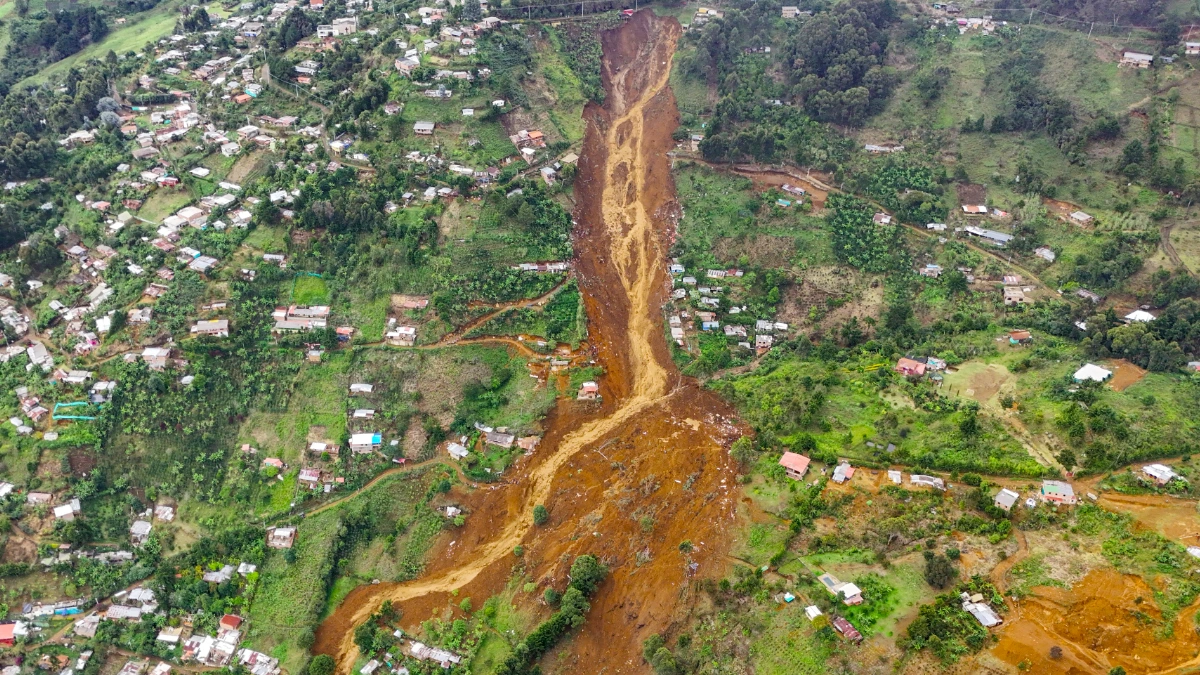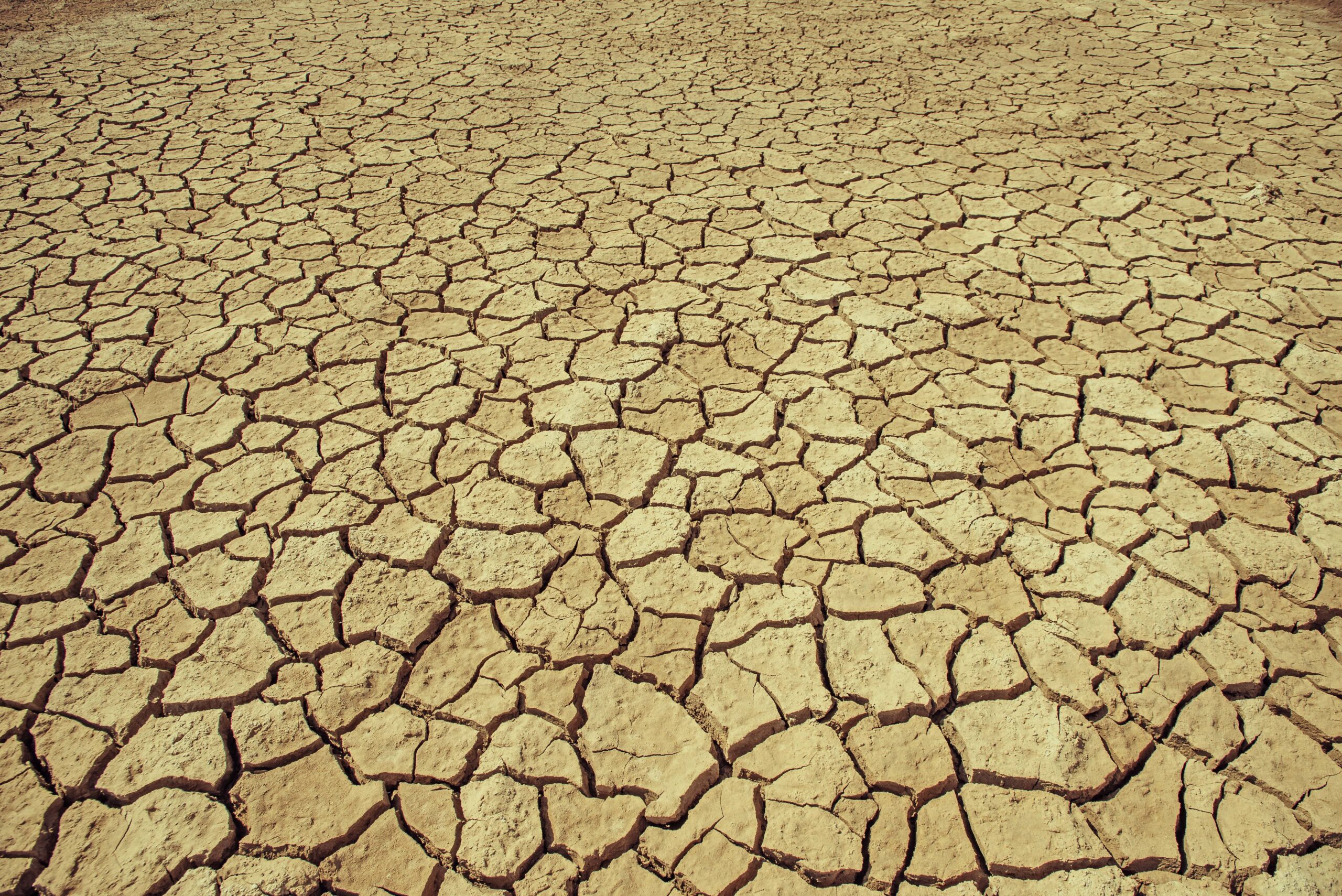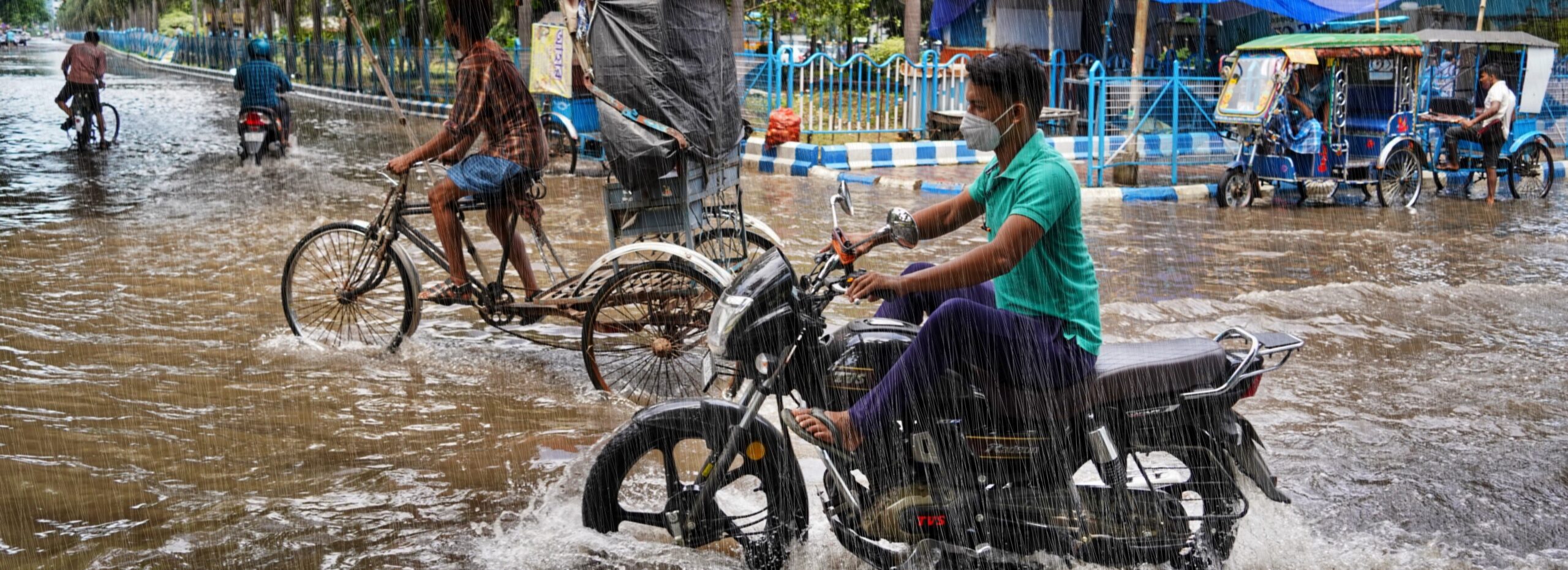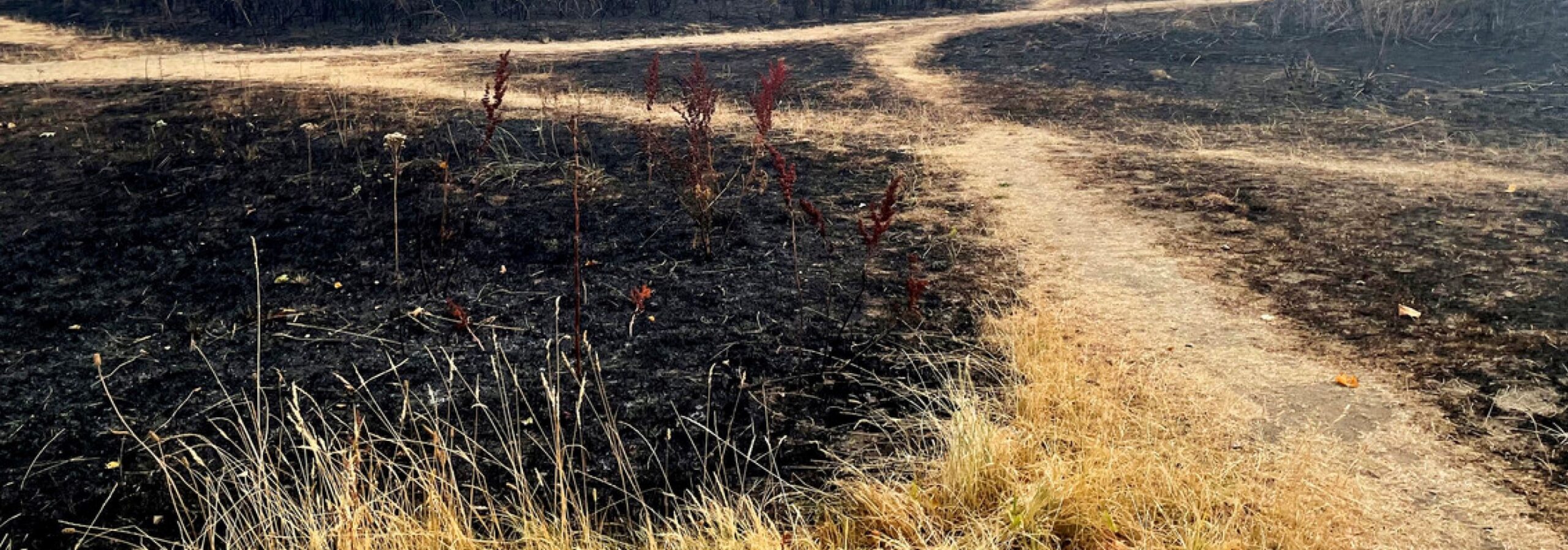One of the deadliest events took place in Colombia, where the June rain fell on saturated soils, leading to a massive landslide that hit Granizal, near Medellín, claiming 27 lives (Alcaldía Bello, 7 July, 2025). In Venezuela, the states of Mérida, Trujillo, and Táchira were among the worst impacted regions. Sustained rainfall in these parts led to the rivers Motatán and Burate to overflow, damaging infrastructure, flooding homes, and sweeping away buildings and vehicles (The Watchers, 25 June, 2025).
To analyse whether and to what extent human-caused climate change altered the likelihood and intensity of the heavy rainfall that led to the floods, causing the damages and resulting in casualties, scientists from Colombia, the Netherlands, Sweden, the UK and the US used published, peer-reviewed methods to perform an event attribution study.
The annual rainfall patterns across Colombia and Venezuela are very different and modulated by complex topography and large scale climate variability. Furthermore, Colombia, in particular the region around Medellín, has experienced a very wet April, followed by a more average May and again a very wet June, which meant the rain at the end of June fell on saturated ground, and on rivers that already had very high water levels. In Venezuela, the flooding was more directly connected to the heavy rain at the end of June. To account for these complexities we study two events: (1) the total rainfall from April to June over the Magdalena river catchment in Colombia (a region comprising the Colombian Andes) and the Falcón and Maracaibo basins in Venezuela (Fig. 1a); and (2) the heavy rainfall over 5 days, measured as the Rx5days, the 5 wettest days per year, in the states of Barinas, Tachira, Trujillo, Mérida, Portuguesa and Apure, a region comprising the Venezuelan Llanos (Fig. 1b).

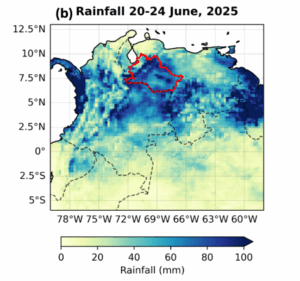
Main Findings
- Landslides are common in Colombia and Venezuela during the rainy season due to steep slopes and loose soils. The rapid growth of population and informal settlements in areas prone to landslides, particularly in Colombia, puts people and infrastructure at risk. These informal communities are growing as a result of rapid urbanization as more people move to cities for economic prospects, and in Colombia many of those people are also displaced as a result of violence and conflict.
- Deforestation and the conversion of the Páramos to agricultural land, mining concessions, and overgrazing have reduced the natural ecosystems ability to regulate rainfall-induced floods and increased susceptibility to landslides.
- People who are internally displaced, dealing with economic instability, or affected by conflict, are doubly vulnerable. When combined with recurring climate hazards, this erodes their resilience over time.
- Based on gridded data-products, we find that neither the seasonal (April to June, AMJ) rainfall event over the Colombian Andes nor the Rx5day over the Venezuelan Llanos was particularly extreme from a meteorological point of view with a return period of about 10 and 3 years, respectively.
- When comparing the AMJ event today with the same event in a 1.3°C cooler climate, we find a decrease in the likelihood and intensity of seasonal rainfall as observed by about 12%, but with a large uncertainty around this estimate. A drying trend is observed for the Rx5day event over the Venezuelan Llanos, with an overall 9% decrease in the intensity of heavy precipitation. However, one out of the three datasets analysed shows an increase, highlighting the variability in the results.
- To quantify the role of human-induced climate change in these changes in likelihood and intensity we also analyse climate model data over the study regions for the historical period. The models show some disagreement for the AMJ Colombian Andes event, with some simulating an increase and others indicating decreases in seasonal rainfall. However, a majority show a decreasing trend. The disagreement between individual models is more pronounced for the Rx5day Venezuelan Llanos event, where some show a significant drying, while others show an increase in heavy rainfall.
- These results are aligned with published research. The most recent (2021) IPCC report showed that for Northern South America, the region encapsulating the Orinoco basin, particularly the Venezuelan Llanos, has high uncertainties with respect to observed trends. It projects a drying for seasonal rainfall, especially in June, July and August, but also an increase in the likelihood and intensity of heavy rainfall such as measured as Rx5day with future warming. Moreover, projections of precipitation in North-Western South America, the region containing the Colombian Andes, exhibit large uncertainty, with low confidence in the projections. These changes highlight how climate change affects different weather regimes in different ways, which models can struggle to represent accurately.
- Taken together our results suggest that wet years such as this and the last will continue to occur, while the observed drying, that is more consistent in the east of the analysed regions, implies an increased risk of dry years. The region needs to be prepared for more frequent and more intense droughts and wildfires. However, it also needs to prepare for the possibility of more intense downpours, particularly given uncertainty in the results and research showing that sub-daily bursts of rainfall can increase even in regions that are experiencing drying trends on longer timescales.
- Collecting, maintaining and sharing high-quality weather data is crucial for understanding changing risks and building resilience against different types of extreme weather. This is especially important for countries with complex rainfall processes, such as Colombia and Venezuela. The relatively wide uncertainties in our analyses highlights the need for long-term in-situ observations and the need for better understanding and representation of the relevant processes in the climate models. It also reflects a broader scientific inequality between the global north and the global south (e.g., WWA DRC floods, 2023) and an ongoing need to invest in weather monitoring stations and climate science to understand changing weather extremes in northern South America.

